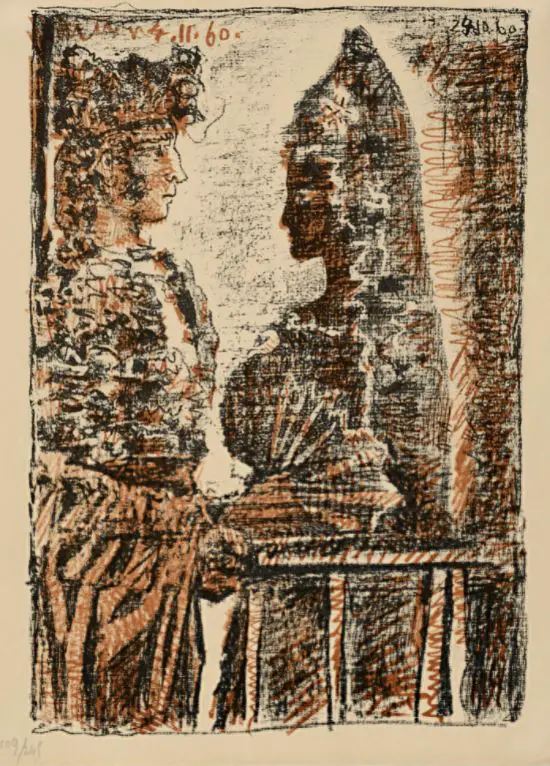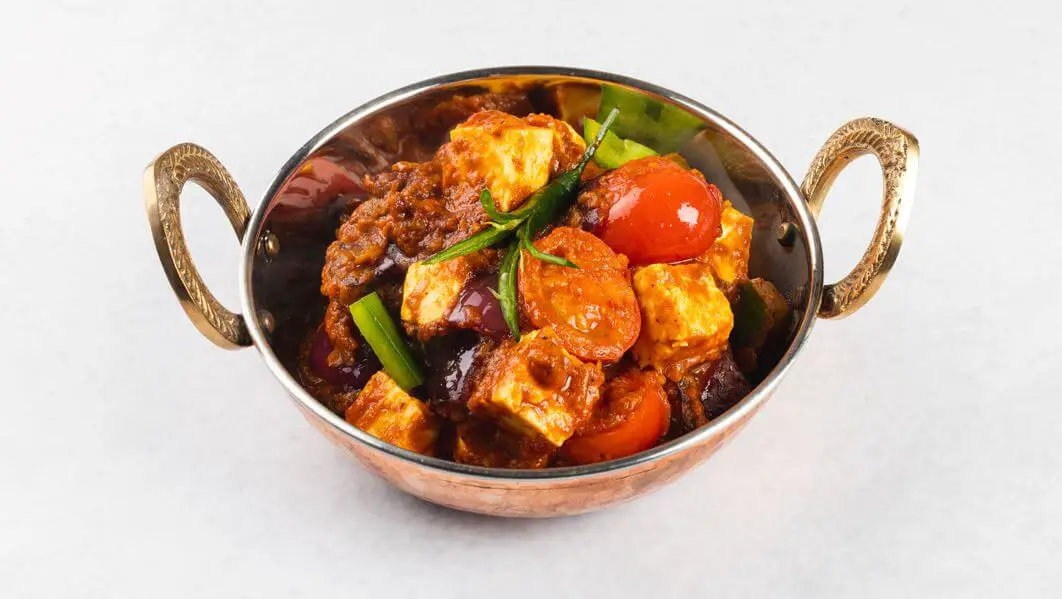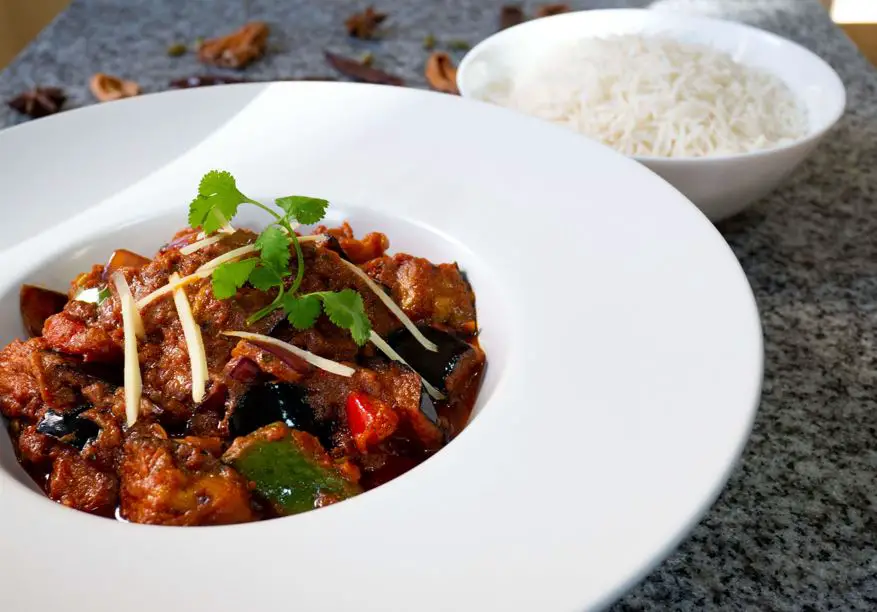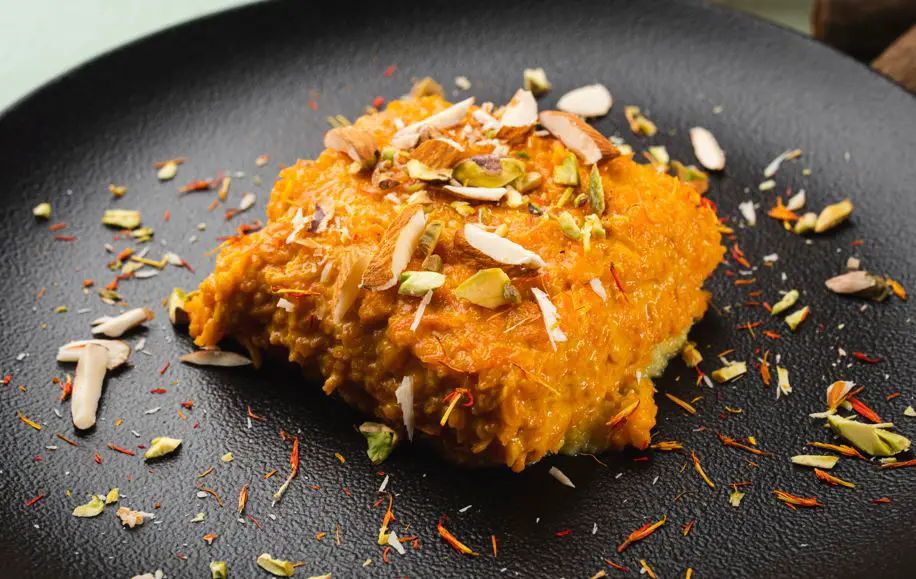Lifestyle
STA, 14 December 2021 - Immigration to Slovenia is accelerating and as of 1 January this year one in seven residents, or 13.9% of the entire population, were born abroad. This compares to 8.5% ten years ago, show Statistics Office data.
Almost two-thirds of foreign-born residents immigrated after Slovenia's independence and one in five arrived between 2018 and 2020. In 2020 a record 23,383 immigrants were recorded.
Former Yugoslav republics are by far the biggest source of immigration. Of the more than 292,000 foreign-born residents, 133,000 came from Bosnia-Herzegovina, 43,000 from Croatia and 30,000 from Serbia.
But a significant share also come from non-Balkan countries, most notably from Germany (7,600), Italy (4,600) and Russia (4,000), but also China (1,200) and the United States (900).
Some 46% of foreign-born residents have Slovenian citizenship, some of whom have had Slovenian citizenship since birth because they were born to Slovenian parents.
The Statistics Office released the data set to mark International Migrants Day.
STA, 10 December 2021 - Financial inspectors have closed down food and drink stalls at Ljubljana's marketplace in Pogačar Square, according to media reports on Thursday, after having previously issued a warning to the stall vendors.
The inspectors visited the stalls on Wednesday, warned the vendors about breaching the anti-epidemic regulations, and announced that they would return the next day and issue fines to the owners of any stalls found to be reopened.
The inspectors' threats were carried out and all four food stalls were closed, according to media reports, while Economy Minister Zdravko Počivalšek told Radio Slovenia that the government had done everything to allow food stall vendors to operate normally.
Restaurants can still serve food and drinks to guests who are seated, said Počivalšek, adding that the government had done a lot to "keep the main part of the business alive". He also called on people to respect the decrees adopted by the government.
The government imposed a ban last Friday on the serving of food and drinks at outdoor stalls, but the city of Ljubljana initially appeared to have found a loophole, arguing that the ban affected hospitality at fairs rather than markets.
Andrej Orač, director of the utility operating the Ljubljana open-air markets, said on Wednesday that market activity in Pogačar Square was allowed, including hospitality.
He added the ban on sale at Ljubljana's open-air markets was incomprehensible as the goods involved were sold there throughout the year, which included the food court and stalls selling garments.
STA, 8 December 2021 - Equal Opportunities Ombudsman Miha Lobnik has noted that the permanent ban on blood donations for all homosexual men is discriminatory, as they are excluded from taking part in this important philanthropic activity despite the fact that the safety of blood donations is also ensured by additional testing for viruses.
Although HIV and other blood-borne viruses are also transmitted during heterosexual sex, blood donation is only prohibited in advance and permanently for homosexual and bisexual men, the office of the Advocate of the Principle of Equality said on Wednesday.
According to Lobnik, the Health Ministry and the Blood Transfusion Centre are responsible for this, and the ombudsman already warned them in 2018 about the potential inadequacy of the current regulation.
Meanwhile, the centre said that Slovenia was due to change regulations in 2022, under which only temporary bans on blood donations will remain, while donors will be selected on the basis of the riskiness of their sexual behaviour, regardless of gender or sexual orientation.
Lobnik found that the general permanent ban on blood donations for men who have sexual relations with other men in Slovenia was originally meant to ensure that the donated blood was safe, as these men were generally more prone to HIV infection risks, according to statistical data.
But the data by the National Institute of Public Health for the period between 2009 and 2018 show that newly diagnosed HIV infections were not only detected among men who have sexual relations with other men, as around 16% of newly infected persons got the virus through heterosexual sex.
A permanent ban on blood donation only for homosexual and bisexual men is therefore not an appropriate means of ensuring the safety of donated blood, as the risk of contracting HIV or other blood-borne viruses depends primarily on sexual behaviour, Lobnik said.
In addition, all donated blood has been tested for the presence of certain viruses for many years, which further confirms the assessment that the currently established system is not the only possible way to ensure the safety of donated blood, he said.
In his assessment of the proportionality of the blood donation ban, Lobnik also noted that this measure perpetuated and spread prejudice against same-sex relationships as such and reinforced the stigmatisation of homosexuality.
The measure causes more harm to society and individuals than it brings benefits, as it infringes on the rights of individuals and unnecessarily denies their blood while spreading stigma. In Lobnik's view, the regulation is therefore not in line with the principle of proportionality.
Few countries in the EU permanently ban all men who have sexual relations with other men from donating blood. In addition to Slovenia, only Croatia, Greece and Lithuania have such regulations.
In other EU countries, there is no such permanent ban on blood donation, or it is only temporary and depends on whether the potential donor has had risky sex within a certain period of time before donating blood.
Interested in giving blood in Slovenia? Learn more here, in English
A few years back, I embarked on a road trip. The plan was to eat our way around Slovenia, following a trail of 20 ingredients, most of them indigenous, that Janez Bratovž, one of Slovenia’s most famous chefs, use as key building blocks in his acclaimed restaurant, JB.
You may have seen JB around, if you’ve not yet eaten at his restaurant. He’s a celebrity both here and abroad—he’s cooked for Ferran Adria and the pope and his Ljubljana restaurant has been listed in the top ten in Europe. If you shop at Hofer, you might have also seen his face on a range of products made from his recipes. He’s been described as the godfather of Slovenian fine dining and provided inspiration for our best chefs, like Michelin-starred Ana Roš and Luka Košir, whom he mentored.
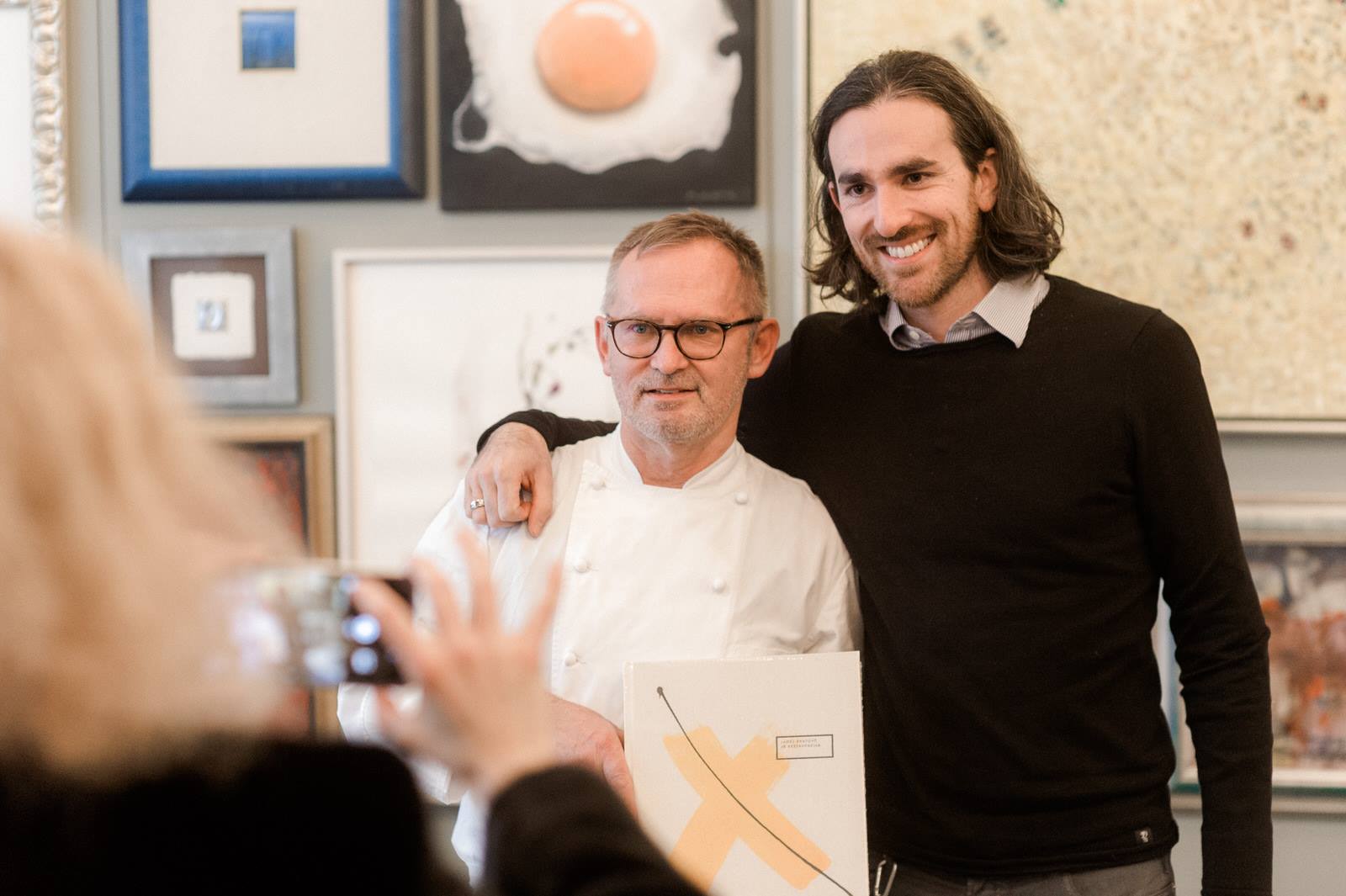
Janez Bratovž and Noah Charney. Photo: Restavracija JB's Facebook
So when he and I discussed writing a cookbook together, I was excited (and hungry) to begin. The result was a beautiful, luxury book that was published in Slovenia in an edition designed by Zare Kerin (winner of more than 200 international design awards), and with photographs by Manca Jevšček (of food) and Matjaž Tančič (of everything else). JB wrote the recipes and is the protagonist. I wrote essays about JB, our adventures and profiles of each ingredient and producer of them who we visited over a fun summer. The result is a travelogue love affair with Slovenia through its food, which happens to have recipes in it. The original edition won five international awards, including a prestigious Gourmand Award. Now a new edition, entitled Slovenian Cuisine: From the Alps to the Adriatic in 20 Ingredients, has been published by the American publisher, Skyhorse. And at only $35, it’s a great holiday gift for anyone with a love for Slovenia and food. You can order a copy on Amazon.
This essay is an excerpt from one of the 20 chapters.
First, let it be said that they are huge. Monster trout, twice the size of their more common cousins, and with a gorgeous, mottled leopard-spot design on their scales. The reason that they very nearly went extinct, as the locals describe it, was due to a single piece of technology put to improper use over just a two-year period. From 1915-1917, the Isonzo Front, a territory along the Italy/Slovenia border near the Soča River, was the scene of some of the most casualty-heavy fighting of the First World War, with an estimated 1,492,209 killed there in just two years. The setting for Ernest Hemingway’s A Farewell to Arms, it is also a place of immense natural beauty, the Soča River named by the Huffington Post as “the most beautiful river in the world.” During the war, hungry soldiers resorted to whatever measures they could to gather up a meal. Fishing took time and left you open to the enemy. It was far faster, and more efficient, to “fish” with grenades. Soldiers would lob bombs into the Soča River. When they blew up, they killed everything beneath the emerald-colored water, and scores of fish would float to the surface, to be retrieved and eaten. It was far too efficient. This method, in this narrow period, almost completely wiped out a species of trout that only exists in this one river and its tributaries, in the mountains of Slovenia.
Sometimes called a “marble trout,” this is one of the largest in the trout family, with a world-record fish having weighed in at an astounding 55.1 pounds. It is also considered the most subtle and delicious of the species, and indeed among all freshwater fish, worldwide.
Related: A Brief Guide to Fishing in Slovenia
To rescue this remarkable species and bring it back from extinction, while still allowing a selection of top chefs to serve it at their restaurants, a team set up the Faronika Fish Farm in Tolmin, not far from the restaurant that is best-known for serving Soča River Trout, Hiša Franko, run by the 2017 World’s Best Female Chef, Ana Roš. Just opened in 2016, Faronika Fish Farm has the capacity to raise 40-45 tons of trout per year, most of which are more common varieties (with 35 tons of Rainbow Trout), but they still hope to raise some 3-4 tons of Soča River Trout per annum—and the fish often weigh around 20 kilos.
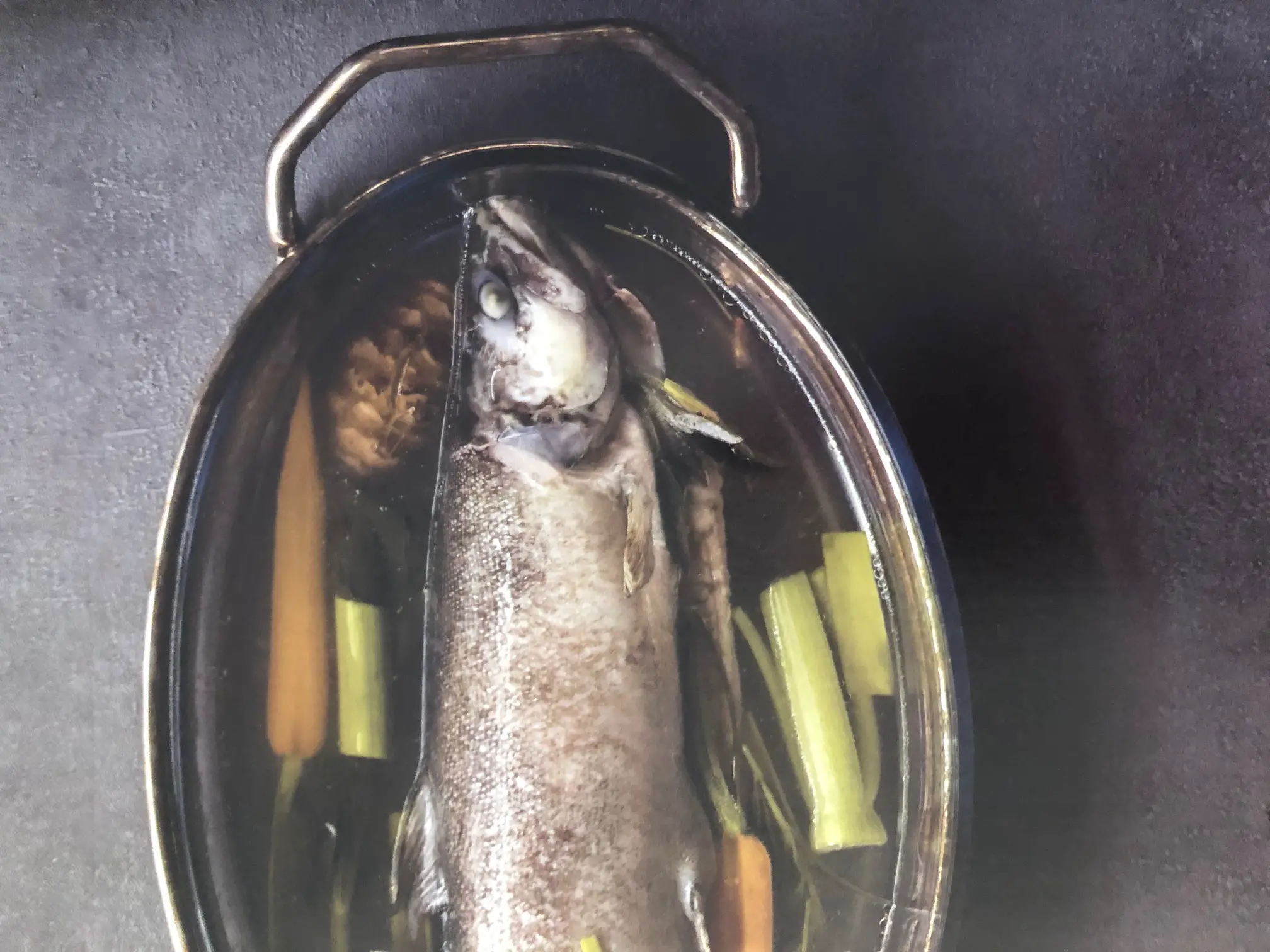
According to Dušan Jesenšek, a marine biologist specializing in Soča River Trout and director of the Faronika Fish Farm, the fish are particularly slow to grow. “As a result of this slow growth, their flesh has a particular texture and flavor that is different from fish who have a more intense and rapid growth period. The flesh is more subtle and easier to digest, and so is often served raw, carpaccio, to experience the full flavor.” Dušan and his colleagues were able to bring back the Soča River Trout from the brink of extinction because their DNA was similar enough to other breeds of sea trout (for Soča River Trout can live in salt or fresh water) that they could cross-breed. While there are now Soča River Trout in the wild, their populations can vary dramatically. In a tributary of the Soča, Dušan said that his team counted 270 fish during one round of monitoring. But just a few weeks later, with reduced rainfall, it was down to 12.
Tolmin and its surrounding towns, like Bovec and Kobarid, are not so far off the beaten track when you look at a map, but they are difficult to get to from the rest of Slovenia. To date, there are only local, very windy roads, and it is actually faster to drive to Italy on the highway and access these border towns from the Italian side. Kobarid has an award-winning museum of the First World War, and the Narnia films had scenes shot here, as the terrain looks suitably for some fantasy realm, particularly the almost artificial-looking turquoise of the Soča River. It is a place that feels far-flung, but that is part of its charm. You can’t stumble upon it but must make a pilgrimage. And its pilgrims are rewarded.

Thanks to the efforts of folks like Dušan, the Soča River Trout is no longer officially an endangered species, but as he says, “It doesn’t mean that we can relax.” Responsible sport fishermen always catch and release Soča River Trout (after taking a selfie), which means that the only such trout you can eat come from Faronika Fish Farm. At least, that’s what’s supposed to happen. There’s a danger in being so wildly delicious.
And there is hot competition for the limited number of Soča Trout raised here. When I visited the farm, I was accompanied by Janez Bratovž, known to all as JB and dubbed by Ana Roš as the godfather of Slovenian fine dining. Before Ana, he was certainly the most famous chef in the region. And yet he was told that, at least on the day we went, there was no Soča Trout to be purchased—the stocks had already been reserved for Roš and a handful of other super-local chefs (as in, within a short drive of Tolmin). That is how rare the fish remains, a tough “catch” even for industry stars and insiders. This makes it that much more important to travel to the source, in order to taste this remarkable fish. Ana Roš likes to serve it as a carpaccio, while Bratovž likes to feature it with artichoke and trout caviar, or as ceviche. The bottom line is that you have to travel to Slovenia to taste this indigenous delicacy, whether at Ana Roš’ Hisa Franko or Janez Bratovž’s JB. When he can get them.
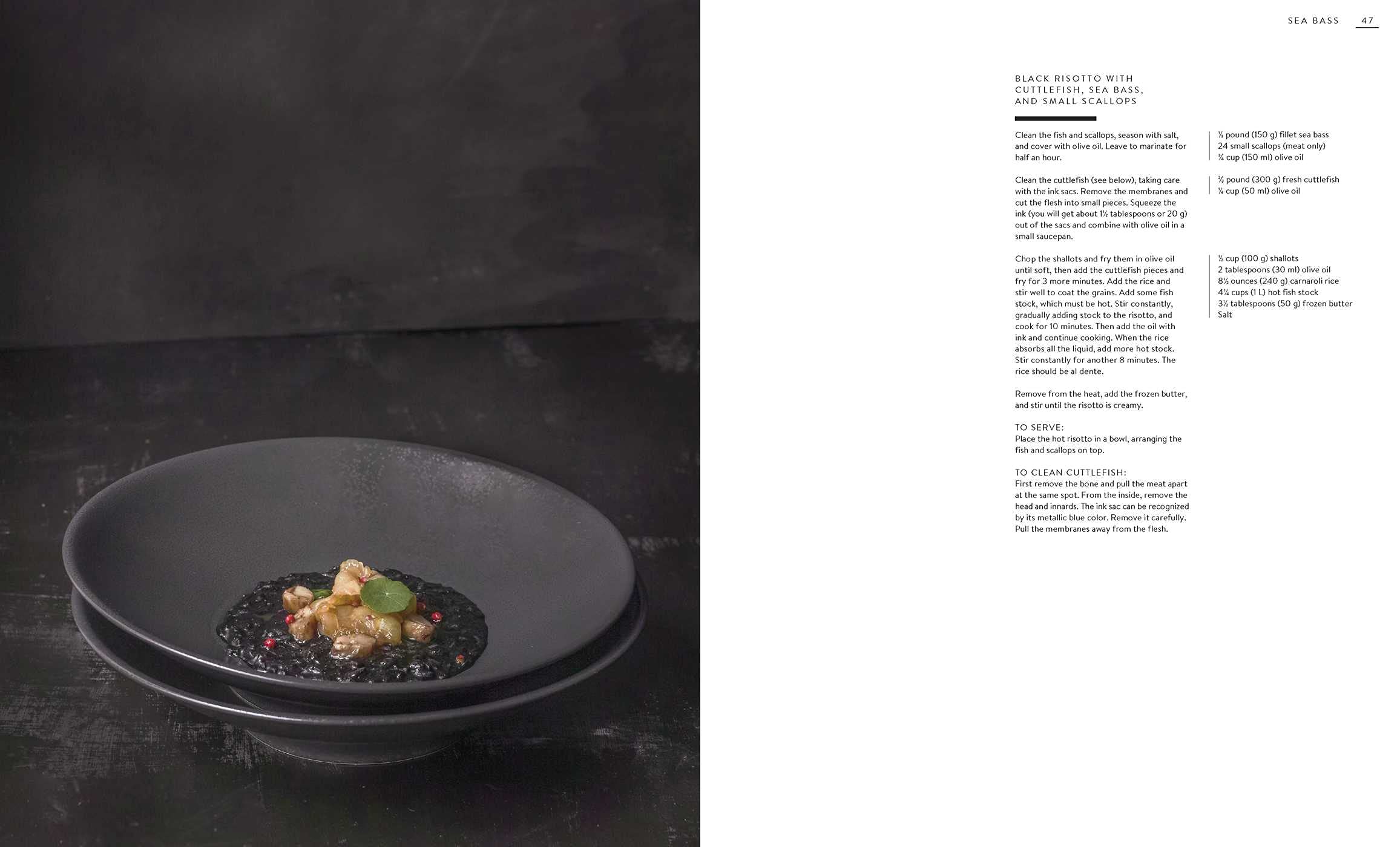
If you'd like to read more, and perhaps order a gift for yourself or a loved on, you can get the book on Amazon, along with Charney's ever popular and personal look at the delights and idiosyncracies of life in Slovenia - Slovenology.
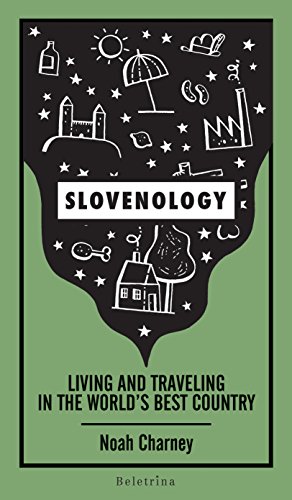
STA, 3 December 2021 - The government decided on Friday to ban the serving of food and drinks at outdoor stalls, with the exception of roasted chestnuts. As for outdoor fairs, organisers will have to make sure that visitors move in a one-way direction, and access to the venue must be fenced off, so that entry outside the official entrance is not possible.
In line with the latest decree, congresses and fairs are permitted to be held both outdoors and indoors, provided that the attendees meet the recovered-vaccinated-tested (PCT) condition, wear face masks and keep a distance of 1.5 metres.
Supervision of compliance with the rules and conditions will need to be ensured by the organisers of congresses or fairs, the Government Communication Office (UKOM) said.
In bars and restaurants, food or drinks are permitted to be served only to sitting customers between 5am and 10pm. The maximum permitted number of persons must be visibly displayed at the entrance of bars and restaurants.
As for outdoor fairs, including Christmas and New Year's fairs, which are currently being organised in several cities around Slovenia, the decree also stipulates that one-way movement of visitors must be ensured, with separate entrances and exits.
Access to the venue must be fenced off, so that entry outside the official entrance is not possible, UKOM added.
The decision comes after the Covid-19 task force called for a ban on stalls serving food and drinks due to risk for the spreading of coronavirus infections, which is much higher at the stalls than in restaurants.
"The task force believes that stalls offering food and drinks should not be allowed, because a great number of people come into contact and the chance of a transmission of infection is increased," task force head Mateja Logar said.
STA, 29 November 2021 - The Foreign Ministry has called on all UK citizens and their family members residing in Slovenia to submit applications for a new biometric permit for temporary residence or exchange the existing one for a new biometric permit for permanent residence on time. The deadline is 31 December.
The current permits issued to UK citizens or their family members who are not EU citizens expire on 31 December as a result of Brexit.
The applications can be submitted at the administrative unit of their residence. The permits are issued in line with the terms of the Withdrawal Agreement. More information is available at: https://www.gov.si/en/registries/projects/brexit/.
The agreement on the UK's withdrawal from the EU came into force on 1 February 2020. As of the day of its exit, the United Kingdom has become a third country, which means its citizens no longer enjoy the same conditions to reside in EU countries as before Brexit.
The Withdrawal Agreement envisages a transitional period for UK citizens residing in the EU to obtain residence permits. The deadline in Slovenia expires on 31 December 2021.
STA, 18 November 2021 - An exhibition of Pablo Picasso's illustrations termed Picasso: Writing into Drawing, marking the 140th anniversary of the birth of the great artist, will open at the Museum of Contemporary Art Metelkova (+MSUM) this evening, bringing almost 260 mid-20th century illustrations from a private collection in Italy.
The exhibition was originally scheduled to open at Moderna Galerija, the national museum of modern and contemporary art, on 30 September, but was postponed due to significant flood damage the gallery suffered on the day before.
It will feature prints of illustrations for Max Jacob's Chronicle of Heroic Times, Pierre Reverdy's Song of the Dead, 20 Poems by Luis de Gongora, Count de Buffon's Natural History, Prosper Merimee's Carmen, Fernand Crommelynck's The Magnificent Cuckold, and for Picasso's own illustrated book Le Carmen des Carmen.
Pablo Picasso, Le Carmen des Carmen, 1949 (1964)
The museum said the illustrations on display showed how Picasso approached illustration of different literary genres or the illustrated book, which can slowly transform into an artist's book.
This is especially so for handwriting, which sometimes "spills over" directly into drawing or painting and consequently further away from the usual understanding of illustration.
"Picasso's prints are one of the hallmarks of his inexhaustible artistic research. He was constantly occupied by printmaking: from his first experiences with etching, dating back to 1899, and all the way to his death in 1973."
The extensive body of his prints covers all the techniques of artistic reproduction (etching, dry-point, engraving, woodcut, lithography, linocut), with the prints usually proving groundbreaking due to high quality and personal stamp in experimenting.
Illustrations of three books - Song of the Dead, 20 Poems and Chronicle of Heroic Times - shift one's perspective of Picasso's work because they are not necessarily immediately seen as Picasso's most typical examples of printmaking, the museum said.
The exhibition, curated by Marko Jenko and sponsored by the Spanish Embassy in Ljubljana, is accompanied by a catalogue.
Jenko has told the STA that the private collection is owned by two sisters who had been old acquaintances of the late Slovenian painter Zoran Mušič (1909-2005) and are admirers of his work.
STA, 17 November 2021 - The prices of apartments and houses have been rising rapidly since the real estate market started recovering in March. In the first half of the year, they rose by around 8% year on year, the highest six-month growth since the 2008 real estate crisis, according to the Surveying and Mapping Authority (GURS).
The prices were pushed to a record high level in the first half of 2021 by the record high rise in prices of apartments in multi-apartment buildings in major towns, except Ljubljana.
In Koper, Kranj, Celje and Maribor the prices jumped by 10-12%, GURS says in today's report on the real estate market in the January-June 2021.
The median price for used flats in multi-storey buildings at national level reached EUR 1,980 per square metre.
After exceeding EUR 3,000 per square metre for the first time ever in the second half of 2020, the median price for Ljubljana apartments stood at EUR 3,250 per square metre in the first half of this year. The record growth in the capital was achieved in 2018, when the prices surged by 15% year on year.
At the coast, the median price of used apartments was EUR 2,700 per square metre, in Kranj EUR 2,520, in the northern and southern Ljubljana area EUR 2,500, in Celje EUR 1,600 and in Maribor EUR 1,550.
"The high growth in housing prices is on the one hand driven by strong demand, encouraged by low interest rates and the availability of money, and on the other hand by limited supply of new-build properties," GURS said, adding that low interest rates encouraged both purchases of properties for own use and as investment.
The prices are being inflated also by the rising prices of building land, and indirectly construction costs as a result of globally rising prices of transport and construction material due to the pandemic.
The high prices of apartments are also driving an increase in demand for construction land, and a construction expansion. "This is the most evident in Ljubljana, where the current and planned construction of new housing buildings can already be compared to the pre-crisis period before 2008," GURS said.
GURS expects housing prices to continue to rise until the supply exceeds the demand. At the moment most new apartments in major towns and tourist areas are sold before they are built despite the record-high prices.
In the first half of 2021, transactions in flats and building land were level with the second half of last year, at 8,350, which is almost 30% higher than in the first half of 2020, which was marked by the Covid-19 pandemic. Compared to the first half of 2019, they were down by 5%, GURS said.
Since the start of 2019, the transactions were up the most in the second half of 2020, by almost 30% compared to the first half of 2020.
At the start of 2021, transactions were first down somewhat, reaching a second bottom since the start of the epidemic in February (the first being recorded in April 2020). Real estate started selling again after the third wave of the epidemic in March. At the end of the first six months, translations already exceeded pre-epidemic figures.
STA, 10 November 2021 - Slovenia's Jewish community has finally got a place of worship as the Ljubljana Synagogue opened in a residential building in Trubarjeva Street on Tuesday in a joint effort by the Austrian Jewish community from Graz and the Slovenian Jewish community.
The two communities joined forces in August 2021 by establishing the Association of Jewish Communities of Graz and Ljubljana, which runs the new Ljubljana synagogue.
The first major event there after the opening will be the celebration of Hanukkah, the festival of light, on 5 December, Slovenian Jewish Community vice-president Igor Vojtic said at yesterday's opening.
"We haven't had such a prayer room until now, but it is key to preserving religious and ethnic identity," Vojtic said at the opening, as quoted by the newspaper Delo.
The community has made efforts to have a synagogue for years but lacked the funds, while it has had the main rabbi for Slovenia since 2003. Services were therefore held at a variety of locations.
Vojtic said that the new synagogue was a result of historical ties between the Jewish communities in Slovenia and Austria.
The Slovenian Jewish community is estimated to have over one hundred members, while there were more than 1,500 before World War II, according to Delo.
Yesterday's opening was also attended by Ariel Haddad, the rabbi for Slovenia, members of other religious communities in Slovenia, including Ljubljana Archbishop Stanislav Zore and Mufti Nevzet Porić, diplomats, including Austrian Ambassador to Slovenia Elisabeth Ellision-Kramer, and Slovenian President Borut Pahor.
Predsednik republike na otvoritvi Sinagoge Ljubljana: "Ta sinagoga je tudi zavoljo sodelovanja med Ljubljano in Gradcem sporočilo sožitja" https://t.co/UGGSak0GlM pic.twitter.com/85cpqtCWcd
Pahor stressed the importance of tolerance and an inclusive society. He said the synagogue was a sign of cooperation between the Jewish communities in Ljubljana and Austria's Graz and a symbol of coexistence within an inclusive society.
The synagogue opening coincided with the anniversary of Kristallnacht (the Night of Broken Glass), a pogrom against Jews carried out in Nazi Germany on 9-10 November 1938.
Elie Rosen, Graz Jewish Community chairman and head of the Ljubljana Synagogue, said it was important to launch the synagogue on the exact date, to show that the Nazis had not managed to destroy Jewish culture in Europe.
"9 November is thus not just a bridge to the past but a bridge to the future," Rosen was quoted as saying in a press release of the new association.
STA, 6 November 2021 - The Koper cathedral will inaugurate its new organ at Saturday's mass, which is to be attended by Apostolic Nuncio to Slovenia Jean-Marie Speich and President Borut Pahor. The organ, which came from the famous Tonhalle concert hall in Zurich, is the second largest in Slovenia and will sound in a concert for the first time in the country on Sunday.
The organ, a donation from Tonhalle to the Koper Cathedral of the Assumption of the Blessed Virgin Mary, weighs 16 tonnes and includes more than 5,500 pipes. It was designed by acclaimed French composer, organist and adviser to organ builders Jean Guillou (1930-2019).
It is the second biggest organ and the biggest church organ in Slovenia, so it is fitting that it will now adorn one of the biggest churches in the country.
After time-consuming works to set up the instrument, including the complete renovation of the choir loft, the organ will be formally handed over to the Koper church and blessed at today's mass at 5pm that will be said by Koper bishop Jurij Bizjak.
The event will feature church choirs of the Slovenian Istria. The organ will be played by Mirko Butkovič, whom the Koper Diocese named titular organist.
On Sunday, the first concert featuring the instrument in Slovenia will be held with Pier Damiano Peretti, an Italian professor of organ at the University of Music and Performing Arts in Vienna, playing the new organ.
Another six concerts will take place from mid-November until New Year as part of the organ presentation season, including a 21 November performance featuring compositions of contemporary Slovenian sacred music that have been written specifically for this instrument.
The head of the Koper Diocese organ commission Martin Šuštar believes that the organ now has an even better sound quality than in Switzerland, as some mechanical and intonation tweaks have been made.
The volume in the choir loft and throughout the rest of the church has been equalised, he said, adding that the organ was a "wonderful instrument that will play an important role in the cultural and religious spheres in the coming years".
The EUR 650,000 renovation project involved a donation campaign that will continue into 2022.
Tonhalle decommissioned the organ after less than three decades because the old organs, built by the firm Kleuker-Steinmeyer, had never quite fulfilled the expectations of the venue that prides itself on being acoustically one of the best halls in the world.
Instead of simply throwing the old organ away, they decided to donate it, and the Koper cathedral was then picked from six applicants across Europe to get the instrument.
Despite the growing number of Chinese restaurants, Slovenia still isn’t a great place for non-European food, and it’s only in the last decade or so that Ljubljana itself has seen more diversity with regard to its dining offers. Much of the excitement there is concentrated on and around Trubarjeva cesta, the colourful but rapidly gentrifying street that runs from Prešeren Square towards one or two of centres of contemporary culture, the Metelkova-Gallery-Museum quarter, and the newly opened Cukrarna.
I lived on the street my first few years in Slovenia, one of the less vibrant members of the immigrant community, albeit one with a long and abiding interest in the spicier end of cuisine towards the other end of Eurasia. Which is why when chef Ziauddin Ahmed started serving food from the subcontinent at Hotel Park (now the B&B) a few years ago I was a very happy customer, joining many others who travelled from far further afield to enjoy his work.
See the full menu. Photo: Zaika
I left Ljubljana two years ago, just at the end of 2019 and a few months before the lockdown put the hotels, restaurants, bars, cafés, clubs and so on through the worst times anyone can recall, and it’s already clear that when this whole mess finally ends the scene will have changed significantly, with some businesses closing, others successfully evolving.
One of those changes to the scene involves Ziauddin, who in March of this year took over the small space at Trubarjeva 60 that previously hosted the Bangladesh restaurant. The place (Zaika) was fully cleaned and renovated, and set up for takeaway and delivery service, making best use of the small space and central location to bring colourful, exotic, and delicious new tastes to the street, with meat, vegetarian and vegan options.
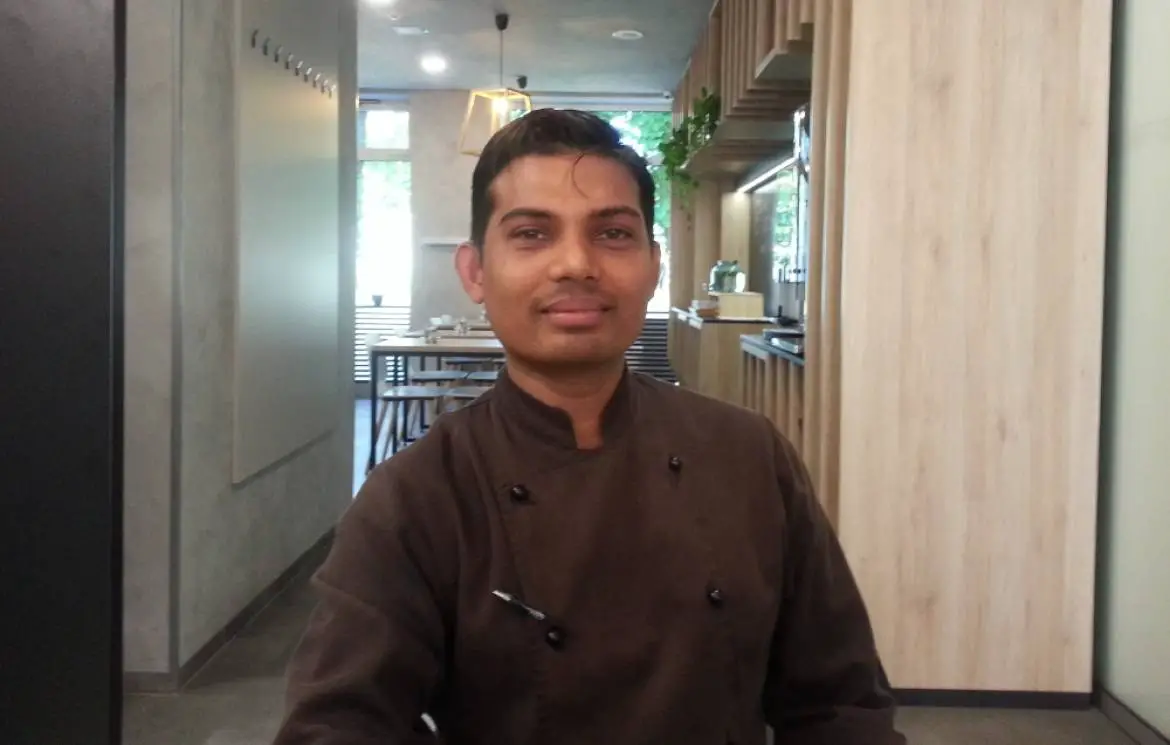
Ziauddin Ahmed, photographed in another location. Photo: JL Flanner
I know Ziauddin from way back, so here’s a little of his story and that of Zaika, which you should check out and support if you’d like more of this kind of thing in town.
How did you end up in Ljubljana?
I’m from Kolkata, West Bengal. I did my master’s degree in the hotel industry. After that I got a job in a five-star super-deluxe hotel, the Hyatt Regency Kolkata. So I started my career from there, and I worked there four and a half years, then I got a chance to come to Ljubljana as the head chef of Figovec, when it was an Indian restaurant, called Currylife Figovec, and then I worked at Hotel Park for a few years, until COVID changed everything.
Are people here open to trying Indian food?
Yes, many people in Ljubljana love Indian food– but still many of them are scared of trying it because their perception is that it’s very spicy, maybe there’s no option for vegans, and the like.
Slovenia is still a young country, so I feel it will take little more time for people to get used to Asian flavours, dishes and spices. That said, recipes are not written in the Bible, so you can change them and make good food according to a customer’s taste-buds and choice, they just need to let me know before I start cooking. To my mind, that’s the real difference between a chef and a cook. A cook just follows the recipe, but a chef can adapt it and always make something that pleases all of the senses, no matter what needs to be changed.
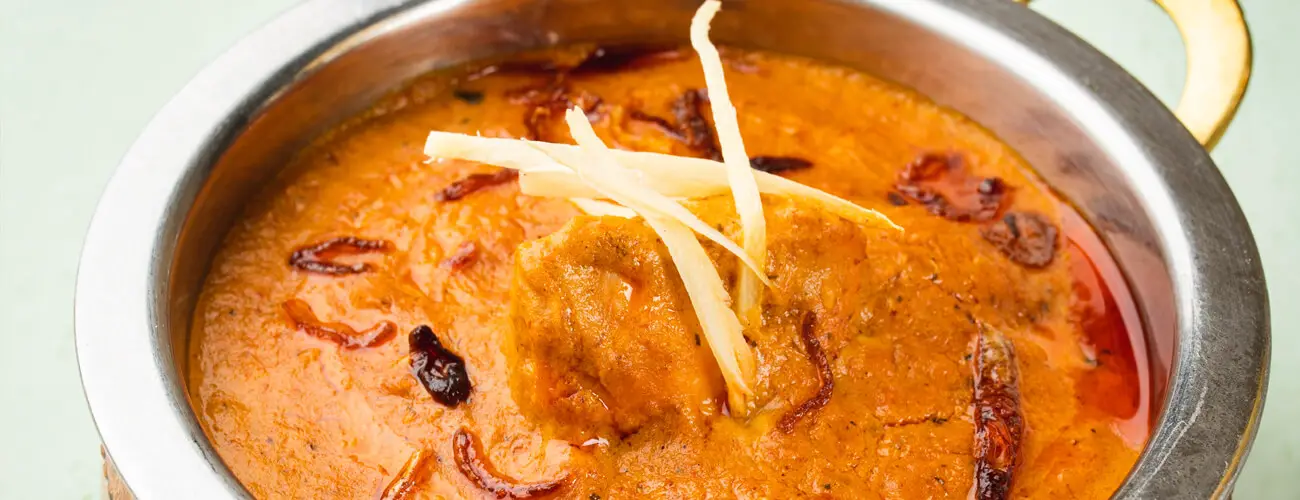
See the full menu. Photo: Zaika
How do you like Slovenia?
I like it very, very much. That’s why I came back. It’s a really beautiful country. I like nature and I am not a person for very crowded places, so i can say it’s perfect for me.
You also have a mixed culture. Most of the year – when there’s no epidemic – the city is dominated by tourists from all over of the world.so you can also enjoy the different cultured people here. And that’s a very beautiful thing about this country. Not overpopulated, very nice people, very friendly.
What about the winters?
Honestly, I’d never experienced that kind of temperatures in my entire life . At my birthplace temperature goes maximum 10 degrees Celsius, and we think “oh, it’s too cold”. When I came here it was minus 15. I was scared that I’d die. But the human body can acclimatise very quickly. Now it’s become normal.
What about Slovenian food?
Well, as a Muslim I can’t eat pork, so when I go out I’m always a little bit scared, because most Slovenian traditional foods are dominated by pork or use pork fat to enhance the flavour. But I like štrukli, žlikrofi, prazen krompir, pasta, although bolognese, again, I worry there’s a little pork fat in there, because fat always gives a good taste.
See the full menu. Photo: Zaika
How many people are working at the new place?
I’d like to get some help with the cooking, but until then I’m the only person here – ordering the ingredients, cooking the food, keeping the place clean and the customers happy.Enter
Who are your customers, and what things sell well?
I get both tourists and locals, because that’s who comes to Trubarjeva. There’s a great slection of Indian curries, but the best-selling items are chicken makhani, tikka masala, subz diwani, hundi kofta, nazakat and naan.
Zaika offers service, takeaway and delivery of meat, vegetarian and vegan dishes from 11 – 21:00 Mon-Saturday. iIt’s very easy to find at 60 Trubarjeva cesta, just down from the famed Trubar café, home to among the best doughnuts in Ljubljana, and – incredibly – still in business after I left town and stopped drinking there.
See the full menu. Photo: Zaika
That café, cake and ice cream store is in good company with the many other small eateries, bars and boutiques that make Trubarjeva a must-see street that’s easy to overlook but much easier, and more fun, to visit, leaving you well-positioned for the various attractions there or just a short distance away, or a pleasant walk along the river, perhaps with an ice cream in hand and your heart open to the life of the city.


